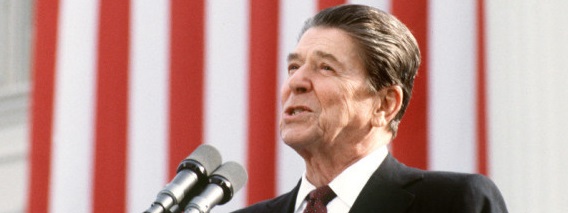On May 13 Variety reported on a movie that’s been long in development, in part because it’s been in want of a director.
Baltasar Kormakur, an Icelandic helmer-producer who’s become one of Hollywood’s hottest film directors, is in discussions to direct “Reykjavik,” a historical drama chronicling the 1986 Reykjavik Summit which took place during the Cold War. Michael Douglas is attached to star as President Ronald Reagan.
Meanwhile, in a May 13 op-ed at the Bulletin of the Atomic Scientists, Hugh Gusterson would take away from Reagan one of the few acts of his that even vaguely resembled an accomplishment: his attempt to abolish nuclear weapons (which he then proceeded to sabotage by clinging to his beloved missile defense, even though Gorbachev made it clear that would never fly with Russia’s generals). Gusterson, whose insights seldom fail to impress, writes of a function he recently attended at the conservative Heritage Foundation in Washington at which Kenneth Adelman, director of the Agency for Arms Control and Disarmament during the Reagan administration, speaking about his new book Reagan at Reykjavik.
Gusterson sought answers to questions than many of those committed to disarmament and arms control share about the Reykjavik summit, such as: Why did “an administration that had spent the previous six years smearing the Nuclear Freeze campaign as a communist conspiracy suddenly careen … into abolitionism”? Also:
I had hoped to find out what analyses by the administration’s arms control analysts preceded the summit, the reaction of the Departments of Energy and Defense to this sudden eruption of nuclear abolitionism, and the degree to which the two world leaders discussed the practical nuts and bolts of abolishing nuclear weapons.
But …
Adelman gave us none of that.
Instead …
… he began with an extended discussion of still photos and a video clip of the first meeting between Reagan and Gorbachev at the previous summit in Geneva. The Heritage audience gave delighted guffaws as Adelman showed how Reagan positioned himself as the alpha male at that meeting by appearing coatless in the Swiss winter to greet Gorbachev, who was bundled in hat and coat, and by supporting Gorbachev’s arm as he climbed the steps as if the older man was in fact the more vigorous.
“At first,” Gusterson continues:
I thought I had wasted my time by going to hear Adelman because he said nothing about nuclear weapons policy. But, on reflection, his talk was deeply revealing about the Reagan Administration’s nuclear weapons policy—precisely because Adelman said nothing about it. … an arms control agreement at Geneva mattered less than Reagan’s visual domination of Gorbachev when they shook hands. Meanwhile the Reagan administration’s actual nuclear initiatives lurched in an alarmingly improvisational and almost hallucinatory fashion from one extreme to the other—from plans for winnable nuclear wars to talk of abolition—precisely because strategic thinking was not the orienting force.
In the end:
As Adelman tacitly made clear in his talk, the point of the Reagan administration’s foreign policy was not to create a less dangerous configuration of nuclear weapons in the world but to perform American dominance, using foreign leaders as human props and cold war flashpoints as compelling backdrops.
Gusterson may be overlooking the extent to which, Reagan, a product of Hollywood, was moved by the TV mini-series The Day After, the 1983 TV movie about nuclear war and its aftermath. Nevertheless, once one overcomes the initial shock at Gusterson’s cynicism, one can’t help but be sympathetic to his claims.

